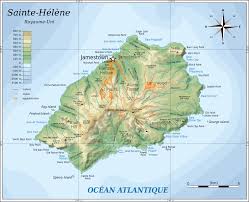Exploring Île Sainte-Hélène: A Jewel of Montreal

Introduction
Île Sainte-Hélène, located in the St. Lawrence River, is one of the two islands that host the vibrant city of Montreal, Quebec. Known for its picturesque landscapes, rich history, and numerous recreational opportunities, the island is a beloved spot for both locals and tourists. As more people seek outdoor spaces for recreation and relaxation, Île Sainte-Hélène’s significance continues to grow, making it a notable destination for those visiting the region.
Historical Significance
Île Sainte-Hélène has a rich historical backdrop. Originally inhabited by the St. Lawrence Iroquois, it was later named after Helen of Savoy, wife of King Louis XV of France. The island played a crucial role during the 1967 International and Universal Exposition, known as Expo 67, which showcased innovation and culture from around the world. The event led to extensive development on the island, including the construction of the Biosphere, a museum dedicated to the environment.
Natural Attractions
Today, Île Sainte-Hélène is a lush green space that features an array of outdoor activities. Visitors can explore picturesque walking and cycling paths that traverse the island, offering stunning views of the Montreal skyline and the river. The island is home to several parks, including Jean-Drapeau Park, which is ideal for picnicking, swimming, and attending various cultural events throughout the summer months.
Events and Activities
The island is not only about relaxation; it hosts various festivals and events that attract visitors year-round. The Formula E electric car race, numerous concerts, and outdoor cinema screenings are just a few examples of the vibrant activities that keep visitors engaged. True to its commitment to sustainability, the events are designed to promote eco-friendly practices while offering entertainment.
Conclusion
Île Sainte-Hélène continues to be a vital part of Montreal’s cultural and natural heritage. With its blending of history, education, and recreational space, the island represents an oasis for adventure seekers and history buffs alike. As urbanization rises, the preservation and promotion of such green spaces become increasingly important for community health, education on sustainability, and enhancing quality of life. It’s a destination that offers more than just scenic beauty; it serves as a reminder of the importance of preserving nature within urban settings.









